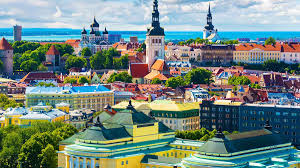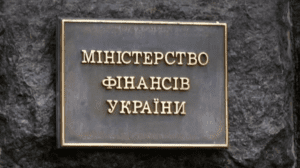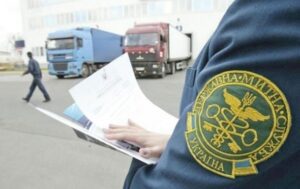
The Estonian Ministry of Finance expects zero growth of the country’s economy at the end of the current year.
According to the forecast published by the Ministry, the reduction in external demand in the second half of last year was stronger than expected, and the expected turn to economic recovery did not take place. This will have the consequence of the lack of growth in the current year.
The Ministry of Economy notes that last year, the exchange of goods contracted globally, driven by the cooling of the Chinese economy and geopolitical tensions. In developed countries and Europe, this was compounded by the rapid rise in interest rates, which was launched to curb inflation, and the deterioration in capital- and energy-intensive activities due to the energy crisis.
Nevertheless, according to the Ministry’s assessment, the factors restraining the development of the Estonian economy have been receding in recent years: price growth has slowed down, wage growth has continued, interest rates have gradually decreased, and there is no high unemployment.
The Estonian Ministry of Finance prepares a financial and economic forecast twice a year, in spring and summer.
Estonia’s GDP in 2023 has decreased by 3.1%. At the end of March 2024, the Bank of Estonia gave a forecast that the country’s GDP decline would slow down to “minus” 0.6% this year and the economy would grow by 3.2% in 2025.
Earlier Experts Club think tank and Maxim Urakin released a video analysis of how the GDP of the world’s largest economies has changed over the past decades, more video analysis is available here –
https://youtu.be/w5fF_GYyrIc?si=BsZmIUERHSBJrO_3
Subscribe to Experts Club YouTube channel here – https://www.youtube.com/@ExpertsClub
ECONOMIC GROWTH, ESTONIA, EXPERTS CLUB, GDP, MACROECONOMICS, MINISTRY OF FINANCE, URAKIN

The Ministry of Finance of Ukraine has supported the proposal of the Association “Insurance Business” (ASB) and the League of Insurance Organizations of Ukraine (LIOU) on the inadmissibility of VAT taxation of commission remuneration of insurance agents, according to the press release of the ASB.
It is specified that the norm on VAT taxation was contained in the draft law of Ukraine “On Amendments to the Tax Code of Ukraine to improve the taxation of insurance activities in Ukraine”.
As reported, both associations jointly appealed to the Ministry of Finance, the Ministry of Economy, the State Regulatory Service, the National Bank with a request not to worsen the tax conditions of insurance business and not to violate the requirements of the EU Directive.
“Ukraine is moving to the EU, so we must check all tax innovations both with common economic sense and with the principles and norms in force in the European Union,” says Vyacheslav Chernyakhovsky, general director of the Insurance Business Association.
At the same time, the press release specifies that the imposition of VAT on commissions of insurance agents directly contradicts the EU Council Directive No. 2006/112/EC of November 28, 2006 “On the Common System of Value Added Tax”. Article 135 “Exemption from taxation of other activities”, which expressly stipulate that “Member States shall exempt from taxation … insurance and reinsurance operations, including related services provided by insurance brokers and insurance agents.
The report also notes that to substantiate their position, insurance associations have analyzed the performance of insurers of Ukraine for the first nine months of 2023 and conducted a representative survey of market participants. According to the results of which it became clear that the state would not receive economic effect from this innovation, and on the contrary, there would be unpredictable additional costs for administration, control and monitoring of VAT operations in insurance activities.
“According to our estimates, our proposals, supported by the Ministry of Finance, saved each insurance company at least 40-50 thousand UAH monthly,” – said Chernyakhovsky.
insurance agents, MINISTRY OF FINANCE, TAXATION, VAT, АСБ, ЛСОУ

In 2023, OTP Bank was ranked second among commercial banks in the overall rating of primary dealers, according to the Ministry of Finance of Ukraine. In total, the rating includes 11 banks – primary dealers.
OTP Bank ranks fourth among state-owned and commercial banks.
The status of primary dealer ensures the exclusive right to participate in the placement of domestic government bonds conducted by the Ministry of Finance, both on its own behalf and for clients of individuals and legal entities, as well as banks and financial companies that do not have this status.
It is worth reminding that in 2023, individuals – clients of OTP Bank purchased government bonds for a total amount of UAH 6.3 billion in equivalent, and the number of transactions amounted to 2064.

In the fourth quarter of 2023, OTP Bank became the first and currently the only bank to provide its customers with access to a unique service – the opportunity to purchase government bonds directly at auctions of the Ministry of Finance. This option was implemented through the OTP Bank UA mobile application. Already in December, 93.3% of customers who wanted to invest in government bonds used it to purchase government bonds. “This tool has become particularly popular because it offers a 100% guarantee of the state to return funds with interest. In addition, it is an opportunity to contribute to supporting the country’s economy, as government bonds are a loan to the state. When we implemented the possibility of purchasing government bonds through the OTP Bank UA app, many customers began to choose this convenient way of investing money,” said Valeria Ovcharuk, product owner of Private Banking at OTP Bank.
To learn more about the possibility of purchasing government bonds in the OTP Bank UA mobile application, please follow the link.
dealer, GOVERNMENT BONDS, MINISTRY OF FINANCE, OTP BANK, OTP Bank UA, Овчарук

Thanks to coordinated cooperation with international partners, Ukraine has managed to attract more than $39 billion in external financing since the beginning of 2023, compared to $32.1 billion for the entire last year, Ukrainian Finance Minister Sergii Marchenko said.
“By the end of this year, donor assistance will reach about $42.3 billion,” he was quoted as saying in a release from the Finance Ministry on Wednesday after a meeting the day before with the heads of central banks of the G7 countries, the leadership of the European Union, the IMF and the World Bank.
Marchenko also noted that Ukraine’s need for external financing in 2024 was reduced from the initial $41 billion to $37.3 billion due to measures to maximize state budget revenues, activate the domestic debt market, and reduce all capital expenditures of the state budget.
The Minister of Finance emphasized that in 2024, the priorities for financing are the military campaign and social support, the former to be provided exclusively at the expense of domestic budget revenues, and Ukraine is counting on the help of partners to finance the latter.
The desired amount of external financing in 2024, including grants, mentioned by Marchenko, was confirmed in the materials of the International Monetary Fund (IMF) based on the results of the second review of the EFF program. “Support from official donors will remain the main source of financing the deficit next year,” the Fund emphasized.
He noted that net financing through the placement of domestic government bonds, although significantly lower, will also remain an important source of financing, amounting to $3.8 billion under the baseline scenario.
“Net domestic market issuance and the use of unencumbered deposits also serve as an important shock absorber and are easier to increase quickly compared to external financing. However, the risks associated with this financing plan are significant, and it is important that guaranteed external financing is provided in a timely manner,” the IMF said.
According to the materials of the second revision of the EFF program, the United States is expected to receive $8.5 billion, Japan – $2 billion, the United Kingdom – $1 billion, and another $20.4 billion from the EU, Canada and Japan.
Earlier, Marchenko clarified that Ukraine expects to receive EUR18 billion from the EU in 2024 as part of the Ukraine Facility, which is being discussed and is expected to total EUR50 billion for 2024-2027.

Financial support commitments undertaken by Ukraine’s partners and the actual allocation of funds are still very different, which creates a liquidity problem and the threat of further monetary financing of the state budget deficit by the National Bank with all the negative consequences for inflation, exchange rate and macro stability, Finance Minister Sergei Marchenko said.
“You know perfectly well that there is a huge difference between commitments and payments… The first quarter of 2023 is the most problematic for us right now… Even a huge amount of commitments will not help us in the first quarter of 2023 (if these funds are not provided),” he said in Wednesday at the discussion “War in Ukraine: Financing the Victory” organized by the think tank Bruegel.
The day before in Berlin, at the International Expert Conference on the Reconstruction of Ukraine, the minister said that Ukraine’s fiscal and quasi-fiscal financing needs in the first quarter of 2023 are estimated at $11.4 billion. Of these, $4.2 billion is for gas purchases: January – $1.9 billion, February – $1.4 billion and March – $0.9 billion.
In total, the financing needs are: January – $4 billion, February – $4.1 billion and March – $3.3 billion, the Finance Minister’s presentation said. According to it, in the remaining months of 2023, they are estimated from $2.1 billion in August to $3.9 billion in June, for a total of $37.9 billion.
Marchenko recalled that in April 2022, it was agreed with international partners that the monthly gap in Ukraine this year is estimated at $5 billion a month, but the actual payment of funds is far from this figure. “For example, in April there were only $1.7 billion, in May – only $1.5 billion, in June – $4.4 billion, in July – $1.7 billion, in August – $4.7 billion, in September – about $2 billion.” , – stated the head of the Ministry of Finance.
According to him, if by the end of this year the EU’s macro-financial assistance (about EUR3 billion – IF) and the funds announced by the United States ($7.5 billion – IF) are allocated, then the Ministry of Finance will feel comfortable.
“But again, this does not mean that we will be able to cover all our expenses before the end of the year. It only means that we can manage the liquidity gap … we are able to meet critical expenses, while other expenses can be deferred,” Marchenko said.
He recalled that for 2023, the Ministry of Finance estimates the need for additional external financing of socially necessary budgetary spending in the amount of $3-3.5 billion, excluding emergency recovery costs, the likelihood of an increase in the background of the latest record Russian strikes on civilian infrastructure.
According to the minister, the commitments to allocate EUR 1.5 billion per month by the European Union in 2023 and EUR 18 billion in total for the year, which were taken the day before by the President of the European Commission Ursula von der Leyen, make it possible to assume a solution to this problem.
“But again, it is important for us to plan ahead. It is not yet clear whether we will be able to use this money in the first quarter of 2023,” Marchenko said.
He said that he discussed this issue at a meeting with the Minister of Finance of Germany, with the ministers of other countries.
“If you are ready to support Ukraine, please do it faster, because while you spend some time creating a solution, we do not have time. January is just around the corner, and January is not covered,” the head of the Ministry of Finance stressed.
He added that he expects to be connected to US funding. “But again, it’s not clear to me when the money can be paid, and if not, we have to find other options, we’ll look at another perspective, perhaps with bilateral creditors, etc. That’s why predictability is so important,” Marchenko added.

The Convention on the Joint Transit Procedure (CCTP) or the so-called “customs visa-free” for Ukraine came into force on Saturday: goods are already flowing into and out of the country under such a procedure, the Ministry of Finance reported.
“Today, October 1, Ukraine entered into force and business opened up the possibility of international movement of goods with 35 other participating countries under one transit document,” the press release says.
The Ministry of Finance clarified that the first country from which the cargo was sent for delivery to Ukraine under the joint transit procedure was Germany: Ukrainian customs officers already see the T1 transit declaration in the NCTS electronic transit system and are waiting for the truck to arrive.
In Ukraine, the first transit declaration for leaving the country was also issued: according to it, the cargo now follows through Poland to Germany.
Currently, the system is also awaiting the arrival of goods at the customs office of departure and other declarations, according to which the goods will be placed under the joint transit procedure and delivered to the customs offices of destination on the territory of the countries participating in the Convention, the report says.
The Ministry of Finance recalled that in accordance with the “customs visa-free” for the delivery of goods from one country to another, a single transit document is submitted: from the customs office of departure to the customs office of destination. This speeds up the passage of customs formalities at the border and reduces the associated costs for businesses. According to the forecast of the Directorate General for Taxation and Customs Union of the European Commission (DG TAXUD), Ukraine can enter the top ten countries in terms of the number of transit declarations.
“Customs is responsible for controlling the goods. We in the EU are striving to spend less time for control at the border, and more inside the country. In Ukraine, so far, most goods travel without checking inside the country – all control work takes place directly at the border. Therefore, queues form at the border. NCTS solves most of this problem: it is possible to submit a declaration to the system in advance, after checking inside the country, to put the necessary seals that are recognized in the EU. Then at the border, you only need time to read the barcode number, as it is done in a supermarket,” summed up the international expert of the Program for Public Financial Management in Ukraine (EU4PFM) Vytenis Alishauskas.
Ališauskas, CUSTOMS, customs visa-free, MINISTRY OF FINANCE, TRANSIT